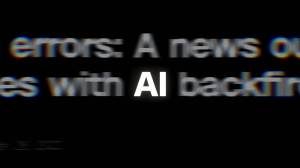AI helped Vermont state government find its technology contracts

When Vermont’s government began restructuring its technology organization one year ago, officials didn’t even know how many IT contracts they had, but thanks to adaptive leadership and some help from artificial intelligence, they now have an answer to that question and others — and a workforce that is emboldened to try new things.
The creation of Vermont’s Agency of Digital Services (ADS) was ordered by Republican Gov. Phil Scott on January 15, 2017, just 10 days after he took office, and on April 17, 2017 the agency was formed, its leaders charged with building an IT organization that was more efficient, developing a “comprehensive strategy for funding procurement and use of IT,” and placing a particular emphasis on professional development for state employees. Vermont Chief Information Officer John Quinn, whose appointment was announced just a week after the agency was formed, told StateScoop that artificial intelligence played a unique role as leaders began taking inventory of their IT resources.
When officials started looking around the state’s federated IT environment, they didn’t know exactly how many IT employees they had, or how many apps, projects or contracts there were. They estimated there were between 280 and 500 IT employees, Quinn said — it turned out there were 379. They also learned there were about 300 IT projects that had at least entered the planning phase, and they discovered the state had 1,450 apps.
It was all useful information, but they also didn’t know exactly where all the IT spending was going. The governor’s executive order made it clear, though, that they needed to find every contract.
“It sounds like it should be relatively simple, but has actually been a long and tedious process,” Quinn said.
Quinn’s management team collected about 10,000 contracts issued by the state, and it was not looking forward to sorting through them manually to discern which were tied to IT spending. Help came from an ADS employee responding to an update email from management. He had been working on a proof of concept for a neural network that could more accurately predict the lifespans of roads and bridges, and said that it might also be useful for the inventory effort. He was right.
ADS didn’t have a lot of data to train the AI, and its results didn’t yield a very high confidence rate, but it ended up saving a lot of time just the same, Quinn said. The team fed contracts to the AI and it looked at indicators like the title of the contract, the purchasing agency and the employees involved, and it was able to build correlations to IT. Words like “server,” “connect,” and “tech” were strong indicators that it was an IT contract, the AI learned.
That digital mountain of 10,000 contracts quickly disappeared. The agency only had to manually sort through about 500 of them, Quinn said. In the end, 400 of those were actually related to IT.
With those contracts in hand, officials have the starting point for an integral piece of delivering the comprehensive IT spending analysis requested by the governor. Quinn said his agency spent the last year aligning the state’s IT personnel into a new centralized organization, and now the coming year will be spent eliminating contract duplication and improving contract turnaround time.
‘This isn’t about saving money.’
IT consolidation is known in the government technology community for creating efficiency and saving money. Oklahoma’s IT consolidation saved the state $372 million annually by its IT leadership’s accounting. In the first eight months of their effort, Quinn said ADS saved sister agencies $2.1 million and it cut another $2.5 million out of an old shared services budget. But the idea was never to save big, because the state had already realized a lot of those savings through service and data center consolidation efforts that were completed years ago through the now-defunct Department of Information and Innovation.
“What I told the legislature is: For Vermont this isn’t about saving money,” Quinn said. “This is about becoming more efficient and more nimble, to be able to move at a more rapid pace as the technology changes.”
And that’s what Quinn and other IT leaders told their staff, too. For as much as AI is being used by the state to support its executive goals, it’s also being showcased as a testing ground for innovation and workforce development. Quinn said leadership has encouraged some friendly competition between two teams in ADS — infrastructure and networking — to try new things with AI and other emerging technologies.
Now, the state is looking into AI for infrastructure monitoring alerts, pavement modeling, and asset inventory.
Throwing it out there
Mark Combs, who was hired as Vermont’s chief technology officer about 10 months ago, told StateScoop the state wants to build additional AI on top of Amazon’s voice-activated Echo Dots as a way to alleviate some of the burden of managing the state’s virtualized server environment on its private hybrid cloud.
“There’s a lot of mundane tasks that go into managing a private cloud infrastructure,” Combs said. “We’ve got 1,100 servers running in this infrastructure so they’re constantly in need of one little thing or another.”
The project started, Combs said, when his brother bought him a bunch of Echo Dots for Christmas and he decided to bring them into work for his team of enterprise architects and cloud services engineers to play with.
“I kind of threw them out there and said, ‘Let’s have a competition here, see who can do something useful for the team with these. And the winner I’m willing to buy more Echo Dots for,'” he said.
Today, the team has to watch an interface to see when a server is reaching maximum utilization or more memory is needed. The ideal scenario, Combs said, would be if the dots could provide an alert when a server is approaching high utilization and a team member can issue a voice command to “spin up a new Linux server” or “add CPU to existing server.” The idea isn’t to completely automate network management, Combs said, but to make it less tedious.
Before joining ADS, Combs was the director of development for NIC, a company that supports digital government initiatives at federal, state and local levels. Outside of volunteering for the Vermont State Guard, this is his first government job.
“One of the bigger differences I’ve seen inside state government versus private sector is people are just as smart but there’s the notion of operations rather than transformation being more important,” Combs said. “I wanted to give my team here the mind frame that we can be very transformational, we can be very innovative, and it’s OK to take risks and fail.”
Going forward, officials say they hope to focus their AI experiments toward their primary goals. Using Echo Dots to speed up service desk response times or migrate a server from the private to public cloud as a backup or disaster recovery solution are both new ideas that are on the table. Combs says they’re going to let their employees’ minds run free and see what they can come up with.






